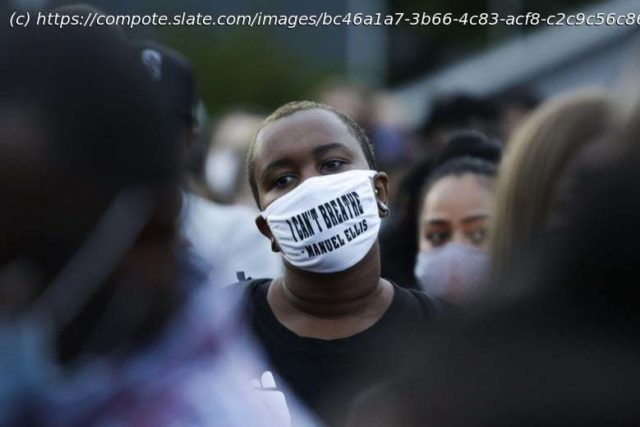«The open air helps. But there are other factors to worry about.»
The nation is entering its second week of mass protests over police violence and the brutal killing of George Floyd. While most Americans agree with the protesters’ cause, some detractors worry about the cities with the largest marches, where people are gathering in the thousands in the middle of the COVID-19 pandemic.
Those arguments aren’t always made in good faith, but the concerns have some validity. How big is the risk that the protests could set off a new wave of infections across the country?
“We should be worried,” said Shira Shafir, an associate professor of epidemiology at the UCLA Fielding School of Public Health. “Any time now we see people who are not maintaining social distancing, there’s the potential for those people to spread the virus. But by the same token, I think we’re currently facing two public health crises. The first is COVID. And the second is racism and police violence that we’ve been facing for centuries.”
As tens of thousands of Americans have taken to the streets in recent days, transmission of the coronavirus is still rampant across the U. S. Anyone joining the protests should be aware that there is a risk. But that isn’t an argument for people to stay home. As many scientists and doctors have agreed—and as the protesters themselves have argued—police brutality against the black community is its own urgent health crisis. And it’s not lost on the protesters that the same community already so devastated by the pandemic is now most likely to suffer from the virus’s spread at the protests. Those demonstrators have chosen to take on the risks from the coronavirus pandemic because they have decided that the public health risks from police brutality are more urgent and immediate.
Still, it’s hard to say exactly how risky these demonstrations are. There are conflicting sets of factors that make it hard to tell what to expect in the coming weeks.
Open-air setting: Being outside could be the saving grace for the protests. There is a consensus among scientists that the outdoors are far safer, in part because a breeze can dilute the virus, meaning you don’t get as much of a viral load hitting your immune system at one time. But there’s still risk if you don’t keep distance from others around you, and ultimately, hundreds and sometimes thousands of people are still packed together, sharing a lot of the same air.
Summer temperatures: There’s some evidence that the virus doesn’t spread as well in hot and humid environments, possibly because it breaks down under the heat and particles fall to the ground more quickly in humidity.






